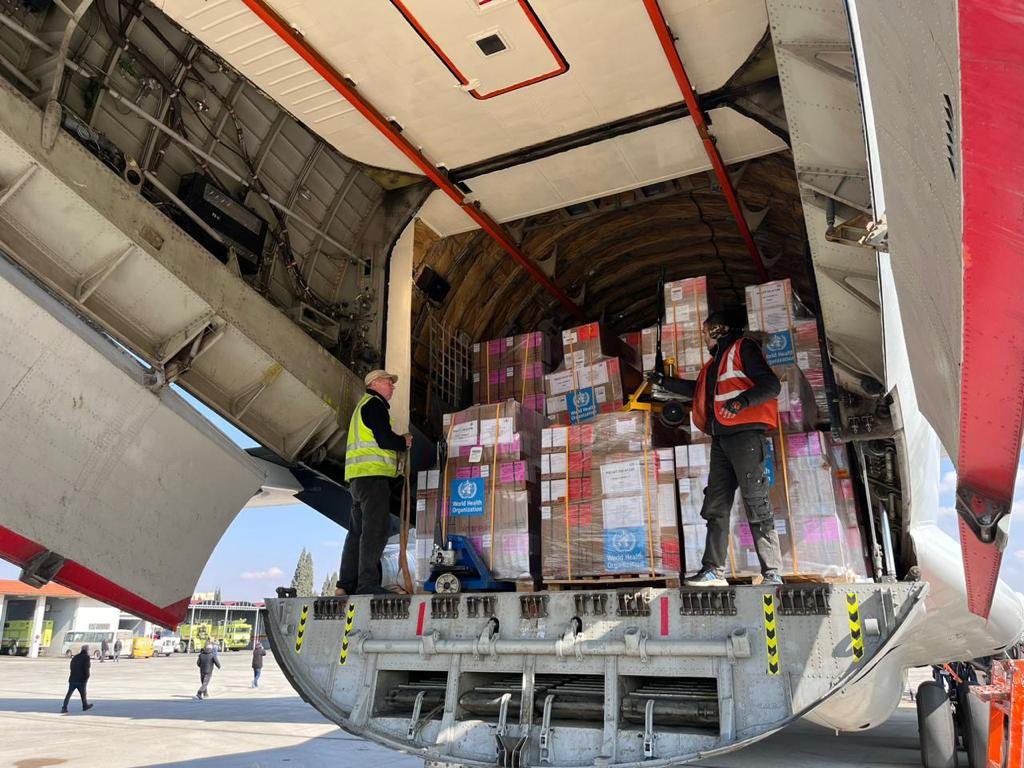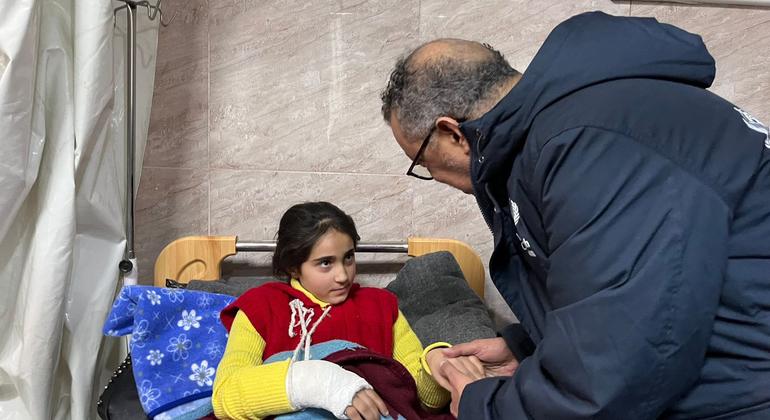The amount is set to increase as the magnitude of the disaster becomes clearer, he said, speaking during a press conference from the Syrian capital, Damascus.
Latest reports put the death toll at more than 33,000, according to international media, with millions more left homeless.
Ramping up operations
Tedros also reported that the Syrian authorities appear open to allowing more border crossings to deliver humanitarian aid into the northwest.
War-ravaged Syria is divided into areas under the control of the Government, opposition forces and armed groups.
WHO is working across all areas affected by the earthquake, which struck on Monday.
The UN agency is also scaling up operations across the country, including in the northwest, where the impact is even worse.
More than 4,300 deaths and 7,600 injuries have been reported there, according to the UN humanitarian affairs office, OCHA .
Prior to the earthquake, 4.1 million people were already depending on humanitarian aid, and needs were at an all-time high.
Recent developments welcomed
Tedros stressed the need to take response “to the next level” to reach all populations who require support.
He welcomed the decision by the United States to ease sanctions against Syria in the wake of the tragedy.
“We equally appreciate the recent blanket approval by the Government of the Syrian Arab Republic for the UN for cross-line convoys, as well as measures to increase cross-border access. We hope this continues,” he said.
The WHO chief reported that he had met with Syrian President Bashar al-Assad earlier on Sunday afternoon “who indicated he was open to considering additional cross-border access points for this emergency.”
Ready to move
Tedros said he is waiting to move across conflict lines to northwest Syria.
“We’re on stand-by actually,” he told journalists. “We can move anytime now through the coastline to the northwest. Based on the blanket permit, we have already permission from this side. We’re waiting now to hear from the other side. As soon as we get that we will cross to the northwest.”
After the earthquake struck, WHO immediately accessed its pre-positioned supplies in the northwest and Aleppo, thus making treatment of major injuries possible. Staff also began distributing supplies to health facilities.

WHO is sending medical supplies to Syria to boost the humanitarian response.
Responding to needs
Tedros arrived in Syria on Saturday, where WHO and partners have so far distributed 110 tonnes of medical supplies to affected areas across the country.
A flight is scheduled to arrive in Damascus on Sunday night with vital specialized emergency health supplies for frontline workers.
The UN agency also is supporting surge capacity of frontline specialized medical teams.
Cascading crises
The earthquake is the latest crisis to hit Syria, following the ongoing conflict, the COVID-19 pandemic, cholera outbreaks, and economic decline.
Twelve years of war have “pulverized” the healthcare system, said Dr. Michael Ryan, WHO Emergencies Director. Prior to the earthquake, just 50 per cent of health facilities were functioning, but the true impact is much greater.
“Not only physical damage to the infrastructure itself but the exodus of health workers, the loss of salaries, loss of training,” he said. “It’s just that death by a thousand cuts to the system.”
‘An unfolding tragedy’
The WHO chief expressed deep respect and admiration for the survivors, first responders and health workers, though pointing to the immense needs they face.
National and international organizations, but also neighbours, mosques, churches and community groups, have been racing to deliver everything from food, clean water and medical care, to a safe space for people to sleep.
Tedros was in Aleppo on Saturday and visited a WHO-supported mobile health clinic distributing medicines to people with conditions such as headaches, anxiety and difficulty sleeping
“WHO and other organizations have trained community workers to offer rapid mental health support, but much more is needed,” he said.
While in the city, Tedros met a young girl called Nour, who lost her parents and suffered a broken arm when their six-storey apartment building collapsed, noting that she “is just one example of an unfolding tragedy that is affecting millions”.
Cross-border aid
The UN’s top humanitarian official continues his mission in the region, OCHA reported on Sunday.
Emergency Relief Coordinator Martin Griffiths travelled to the Turkish side of Baba Al-Hawa, the only remaining authorized border crossing for aid delivery into northwest Syria.
Mr. Griffiths also visited a UN hub in Hatay, where he witnessed the transshipment and monitoring of 10 trucks loaded with aid provided by the International Organization for Migration (IOM) prior to setting off to Syria.
This was the fourth UN cross-border aid convoy since the earthquake struck northern Türkiye on Monday, affecting people on both sides of the border.
The first convoy, with six trucks, crossed into Syria on Thursday following a three-day temporary disruption from damaged key roads.
A second convoy of 14 IOM trucks crossed on Friday, followed by a third the next day comprised of 22 trucks containing medicines, cholera test kits, blankets, hygiene kits solar lamps and other relief items.
OCHA said aftershocks are reportedly continuing in northwest Syria, forcing people to keep fleeing their homes.
Civil defense teams concluded search and rescue operations on Saturday and have moved onto removing debris and recovering bodies, however efforts are being hampered by fuel shortages and a lack of machinery and vehicles.
‘Put politics aside’: UN Envoy
Meanwhile, the UN Special Envoy for Syria, Geir Pedersen, arrived in Damascus on Sunday on a pre-planned visit.
He affirmed that humanitarians will do all they can to access everyone who needs help, and underlined his efforts to rally support.
“We are reaching out of course to bilateral countries, we are mobilizing funding and we’re trying to tell everyone put politics aside. This is a time to unite behind a common effort to support the Syrian people,” he said.
Mr. Pedersen also stressed the need for crossline and cross-border access. “I’m in close touch with the UN humanitarian family, we’re working together to try to mobilize this support and that of course is my key message during this visit to Syria.”



